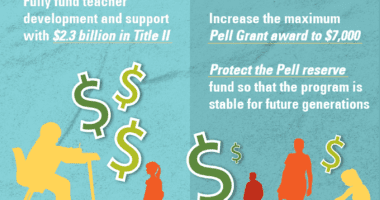Do Classroom Assignments Reflect Today’s Higher Standards?
Unfortunately, not so much.
That’s according to a new analysis Ed Trust released today that reviews more than 1,500 English language arts assignments from two diverse middle schools in large, urban school districts. Our findings show that while many states have adopted new, more rigorous standards — and that while there is some acknowledgement of that in classroom lessons — that rigor hasn’t translated into the more meaningful assignments and learning that many of us had hoped to see.
Other top-level findings:
- Fewer than 4 in 10 assignments (or 38 percent) were aligned with a grade-appropriate standard. Moreover, rates in high-poverty schools were considerably lower than at low-poverty schools, at roughly one-third of all assignments.
- Fifty-five percent of assignments were connected to a text. However, overall, only 16 percent of assignments required students to use a text for citing evidence as support for a position or a claim.
- Only 4 percent of all assignments reviewed pushed student thinking to higher levels.
- About 85 percent of assignments asked students to either recall information or apply basic skills and concepts as opposed to prompting for inferences or structural analysis, or requiring author critiques. Many assignments show an attempt at rigor, but these are largely surface level.
- Relevance and choice — powerful levers to engage early adolescents — are mostly missing in action. Only 2 percent of assignments meet both indicators for engagement.
Find the full report “Checking In: Do Classroom Assignments Reflect Today’s Higher Standards?” and see example assignments at www.edtrust.org/classroomassignments.












